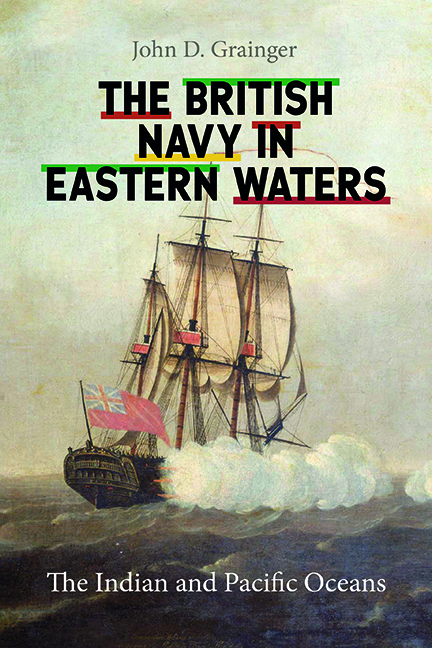4 - Wider Interests, Greater Threats (1710–1750)
Published online by Cambridge University Press: 26 May 2022
Summary
The ships which sailed to eastern waters from European ports had a choice of several routes in the Indian Ocean, depending on their destinations and on the state of the monsoon. The monsoon blew from south to north from June to September, the Indian hot season, and in reverse from December to March, but the winds originate south of the equator, so in the south in the hot season they began by blowing south-east to north-west, and swing round to south-west to north-east after the equator. The cool season winds are less powerful, not being so much heated by the sun, and begin over land as dry (and cold) winds: they begin by blowing from north-east to south-west, but then shift round at the equator, and then meet the south-westerly trade winds there.
Ships heading for India, therefore, would be well advised to arrive off South Africa during the south-west monsoon, say in June, but not too early since this could be a time of violent weather. Company ships called at St Helena for fresh supplies; Dutch ships used the Cape, which was usually available in peacetime to others. From there the choice of routes from South Africa depended on the ship's destination. Ships heading for Bombay or Surat could use the Mozambique Channel, or possibly sail east of Madagascar, passing the islands of Bourbon and Mauritius. Ships heading for Madras or Calcutta found it best to sail due east along the line of 40 S from the Cape and swing north at about 80 E, and then sail due north; this would save them having to negotiate a passage round southern India and Ceylon. The Dutch had long used an even longer easterly track to reach their part of the East Indies, heading for one of the passages through the Indonesian islands, so much so that several of their ships collided with Australia, to their grief.
Returning to Europe was somewhat easier, since the north-east monsoon was less powerful, though there was an area of doldrums along the equator which might delay progress. There were variations on all these routes, including using the southern trade winds to sail north in the hot season.
- Type
- Chapter
- Information
- The British Navy in Eastern WatersThe Indian and Pacific Oceans, pp. 63 - 80Publisher: Boydell & BrewerPrint publication year: 2022



